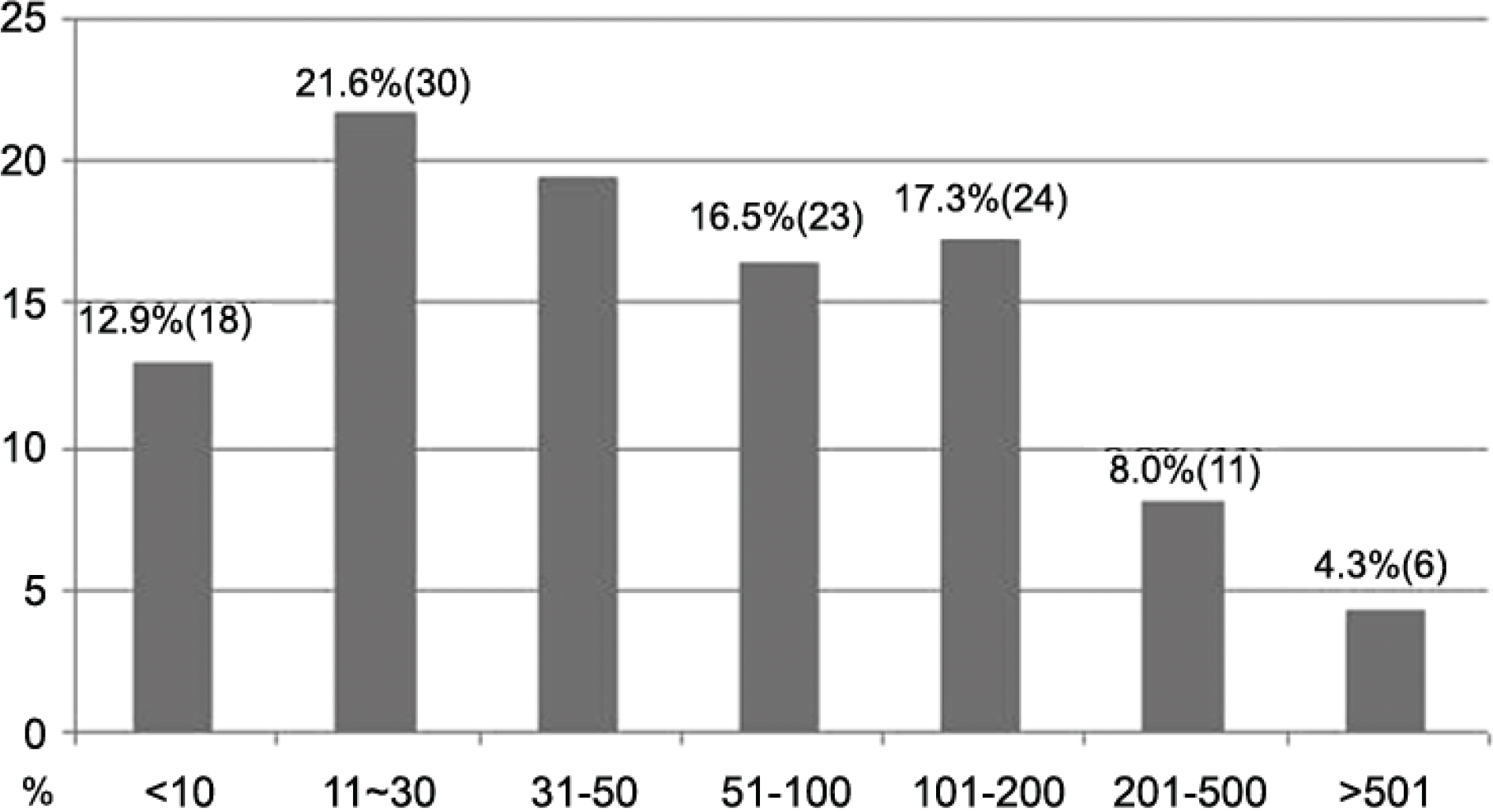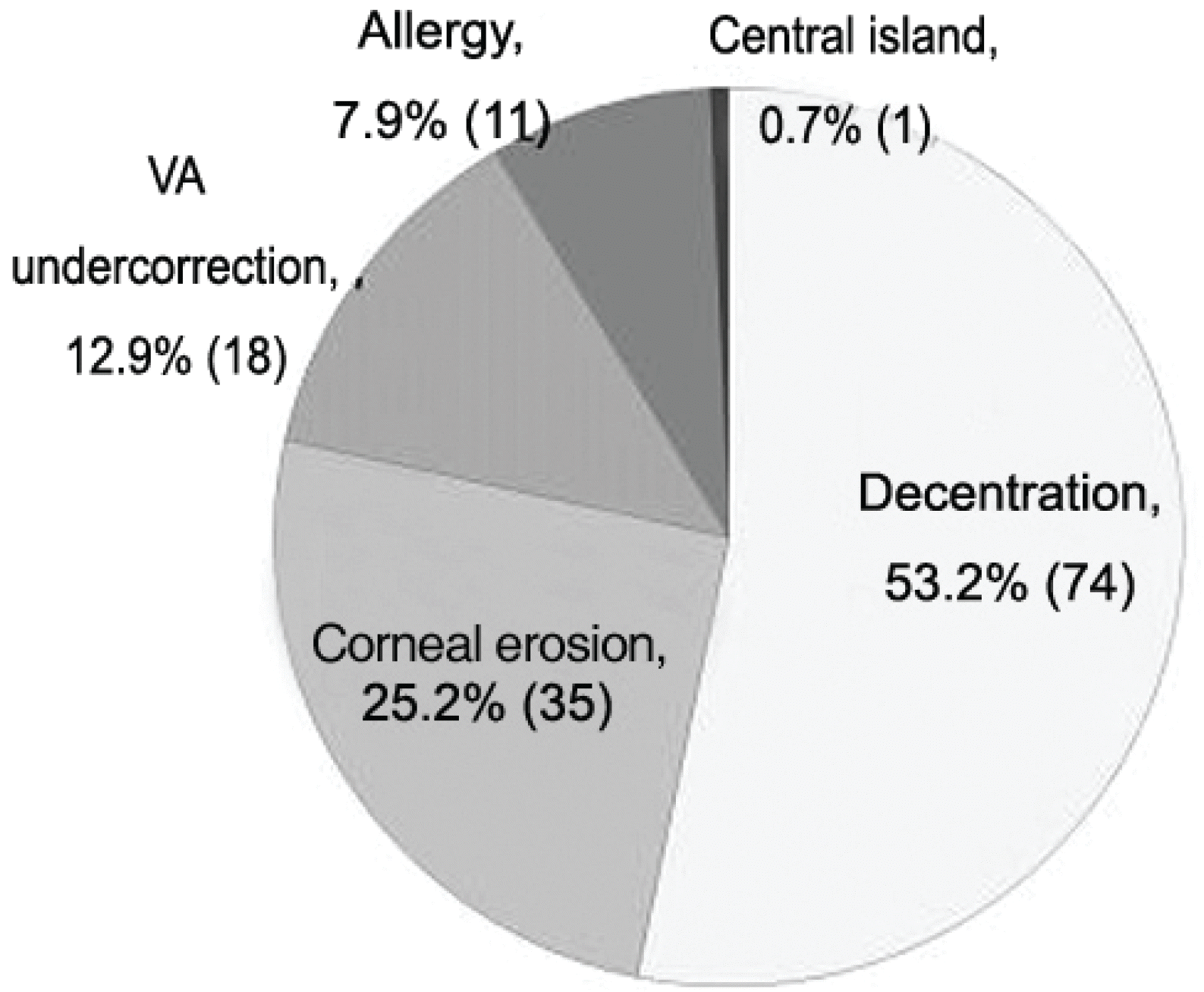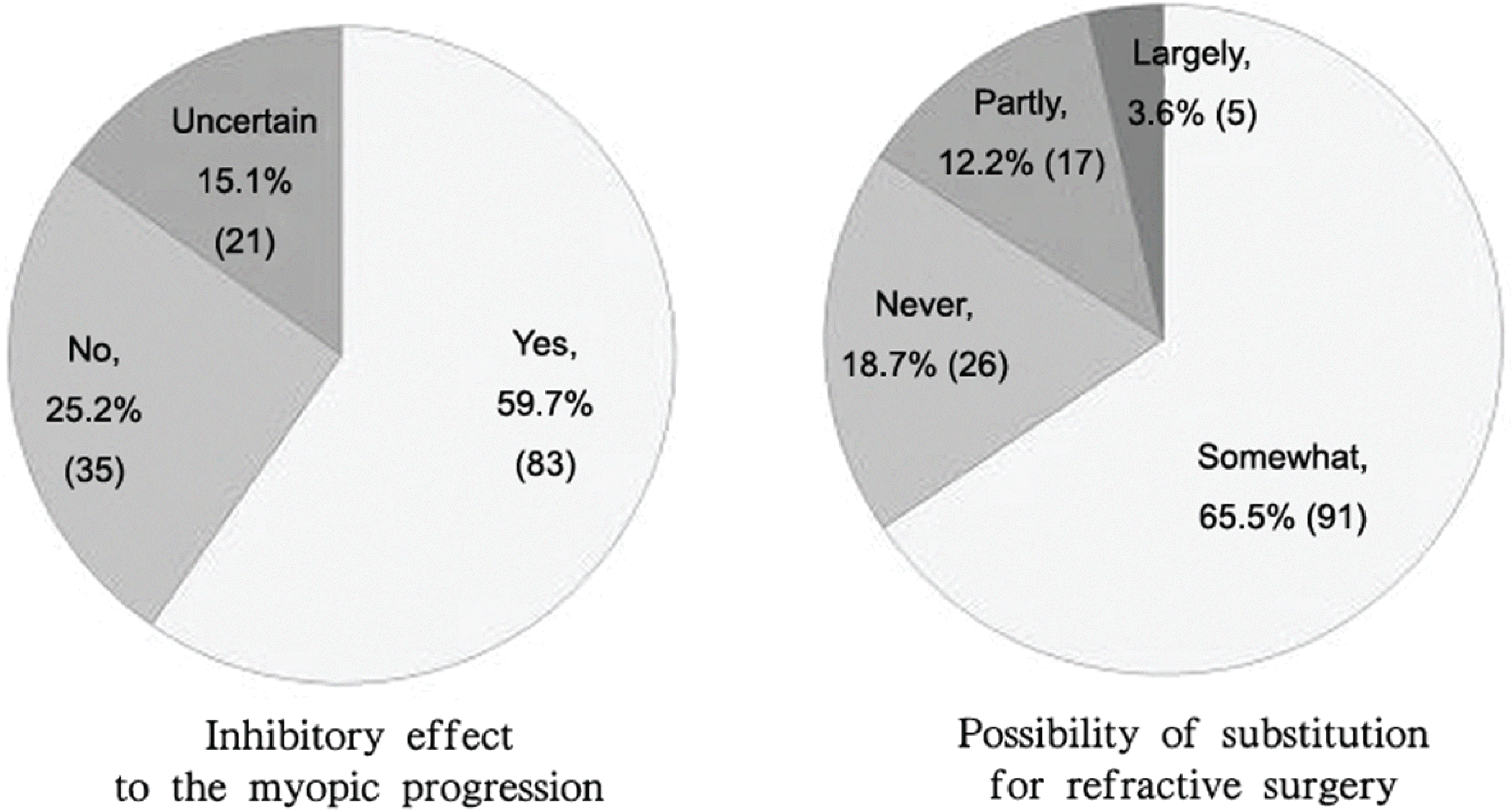Abstract
Methods
We sent out an online survey to the members of the Korean ophthalmological Society in December 2007 and March 2008. We received responses from 139 ophthalmologists and analyzed the results of each question.
Results
Easy fitting (34.5%) was selected as a major factor in the selection of orthokeratologic lenses. Children between the ages of 10 and 15 years with myopia less than 5 diopter, astigmatism less than 1.5 diopter, and 42 to 45-diopter keratometric value were preferred by most respondents. Decentration (n=74, 59%), corneal erosion (n=35, 25.2%), undercorrection (n=18, 12.9%), and allergy (n=11, 7.9%) were the most frequently encountered problems. 54.7% (n=76) of respondents needed to be fitted twice for trial lenses. The time required for the lens prescription in one patient was more than 30 minutes in 83.5% (n=116) of respondents. 59.7% of the respondents agreed that the lenses had an inhibitory potential on myopic progression, and 81.3% of the respondents said that orthokeratology could substitute for refractive surgery.
Go to : 
References
1. Jessen GN. Orthofocus techniques. Contacto. 1962; 6:200–4.
2. Yun YM, Kim MK, Lee JL. Change of Corneal Parameters after Removing Reverse Geometry Lens in Moderate Degree Myopia. J Korean Ophthalmol Soc. 2005; 46:1478–85.
3. Chang JW, Choi TH, Lee HB. The Efficacy and Safety of Reverse Geometry Lenses. J Korean Ophthalmol Soc. 2004; 45:908–12.
4. Shin DB, Yang KM, Lee SB, et al. Effect of Reverse Geometric Lens on Correction of Moderate-degree Myopia and Cornea. J Korean Ophthalmol Soc. 2003; 44:1748–56.
5. Jee DH, Hong ME, Kim MS. The Efficacy and Safety of Ortho-K LK Lens. J Korean Ophthalmol Soc. 2003; 44:706–11.
6. Cho P, Cheung SW, Edwards M. The longitudinal orthokeratology research in children (LORIC) in Hong Kong: a pilot study on refractive changes and myopic control. Curr Eye Res. 2005; 30:71–80.

Go to : 
 | Figure 1.Distribution of numbers of orthokeratologic lens-prescribed all cases by responders. |
 | Figure 2.A, B. Maximum power of myopia and astigmatism for which the responders prescribe orthokeratologic lenses effectively and safely. C. Distribution of the mainly preferred keratometric value. |




 PDF
PDF ePub
ePub Citation
Citation Print
Print




 XML Download
XML Download